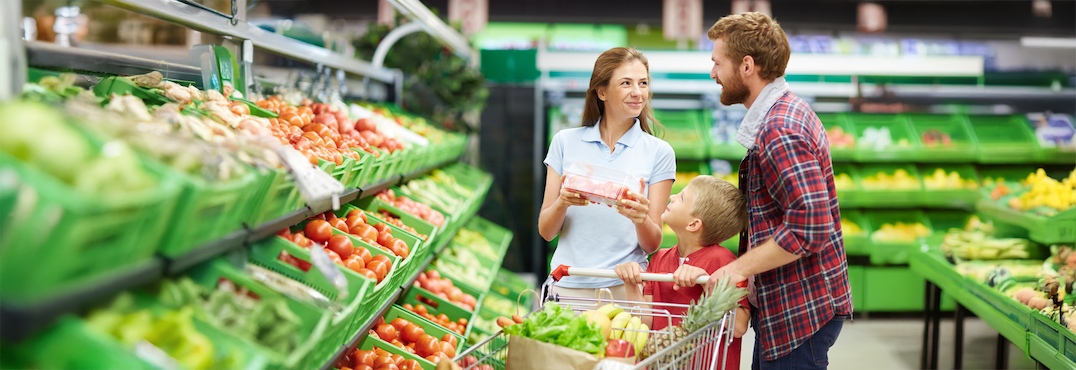As consumers become more conscious of where their food comes from, understanding the differences between greenhouse grown and field-grown produce is essential. Greenhouse growing has gained popularity for its ability to provide fresh, high-quality produce year-round while reducing environmental impact. But how can you tell the difference between greenhouse and field-grown vegetables?
Here’s a guide to help you identify the key distinctions between the two types of produce so you can make informed decisions at the grocery store.
1. Appearance: Uniformity vs. Natural Variations
One of the most noticeable differences between greenhouse grown and field-grown produce is their physical appearance.
Greenhouse Grown Produce:
- Typically more uniform in size, shape, and color due to controlled growing conditions.
- Vegetables often have a smoother, glossier skin with fewer blemishes or scars.
- Peppers, tomatoes and cucumbers tend to look more picture-perfect because they aren’t exposed to harsh outdoor conditions.
Field-Grown Produce:
- More variation in size, shape, and texture due to environmental factors like wind, rain, and soil conditions.
- Can have minor scars, rough patches, or inconsistent coloring due to exposure to sunlight, insects, and changing weather.
- Tomatoes, for example, may have some green streaks, uneven ripening, or rough skin compared to their greenhouse grown counterparts.
2. Texture and Skin Toughness
The way a vegetable feels can also provide clues about its growing conditions.
Greenhouse Grown:
- Usually firmer and smoother since they aren’t exposed to outdoor stressors.
- Cucumbers, for example, are often thinner-skinned and more uniform in texture when greenhouse grown.
Field-Grown:
- Can have thicker, tougher skin to withstand natural elements like heavy rain and pests.
- Field-grown cucumbers might have a bumpier, waxier texture compared to the smooth greenhouse varieties.
3. Seasonality and Availability
If a vegetable is available out of season, it’s likely greenhouse grown.
Greenhouse Grown:
- Available year-round, regardless of season.
- Tomatoes, peppers, and cucumbers are commonly grown in greenhouses to meet market demand in colder months.
- More consistent supply, reducing dependence on imports.
Field-Grown:
- Limited to specific growing seasons.
- Tomatoes, for example, are at their peak in the summer, while squashes and root vegetables thrive in fall and winter.
- Produce might be imported from other countries when out of season locally.
💡 Tip: If you see summer vegetables like tomatoes and cucumbers being sold fresh in the winter months, they were likely grown in a greenhouse.
4. Taste and Freshness
The flavor and shelf life of produce can vary significantly between greenhouse and field-grown options.
Greenhouse Grown:
- Often sweeter and more flavorful because they receive the ideal amount of light, water, and nutrients.
- Longer shelf life due to controlled growing and harvesting methods.
- Hydroponic and aquaponic greenhouse vegetables have a clean, crisp taste due to a balanced nutrient mix.
Field-Grown:
- Can be more robust and earthy in flavor, particularly for root vegetables and berries.
- Shorter shelf life due to natural exposure to elements, which can cause quicker spoilage.
Tip: If you find juicy, flavorful tomatoes in the off-season, they are likely greenhouse grown.
5. Labels and Certifications
Supermarkets and grocery stores often label greenhouse grown produce.
Look for these terms on packaging:
- “Greenhouse Grown” – Clearly indicates a controlled environment.
- “Hydroponic” or “Aquaponic” – Suggests plants were grown in a soil-free, water-based nutrient system.
- “Sustainable” or “Eco-Friendly” – Many greenhouses emphasize environmentally conscious growing methods.
Tip: Field-grown produce is less likely to carry specialty labels.
6. Environmental Impact: Sustainability vs. Traditional Farming
Greenhouse Grown:
- Uses less water (hydroponic systems recycle water, reducing waste by up to 90%).
- Reduces pesticide use, since pests are easier to control indoors.
- Requires less land while producing higher yields per square foot.
- Typically grown closer to consumer markets, cutting down on transportation emissions.
Field-Grown:
- More dependent on weather conditions, leading to seasonal shortages and food waste.
- Often requires more pesticides and fertilizers to combat natural threats.
- Can contribute to soil depletion and water runoff pollution in large-scale farming operations.
💡 Tip: If you’re environmentally conscious, choosing greenhouse grown produce can be a more sustainable option.
Which One Should You Choose?
Greenhouse grown produce has it’s advantages, and is the right choice for fresh, sustainable, flavorful veggies:
- For freshness and availability → Choose greenhouse grown
- For sustainability and fewer pesticides → Go for greenhouse grown
When shopping, take a closer look at size, texture, availability, labels, and taste to distinguish between the two types of produce. Understanding these differences will help you understand the benefits of choosing greenhouse grown.




